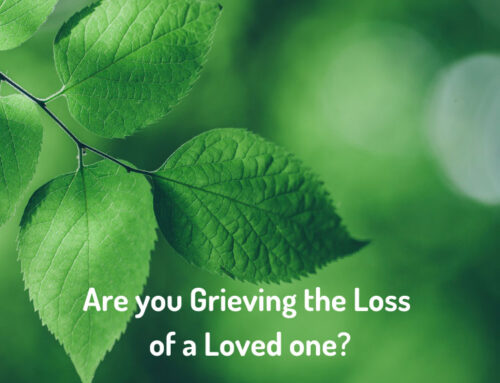Seven Simple Practices You Can Use to Cultivate Mental Clarity in Your Life
by Holly Erin Copeland
A simple guide to finding peace of mind and stepping into the flow of life.
Oftentimes, struggle seems synonymous with being human. We struggle because we want to make the outside world conform to the way we think things should be. However, if your benchmark for happiness is derived from the state of the external world, you are condemning yourself to a lifetime of misery.
But what if there was another way?
“The true nature of all living creatures is already completely free from suffering and endowed with perfect happiness: In seeking happiness and avoiding unhappiness, regardless of how we go about it, we’re all just expressing the essence of who we are.” — Yongey Mingyur Rinpoche
The path to rediscovering our innate true nature of ‘perfect happiness’ is indeed possible, just as Mingyur Rinpoche describes. It involves rewiring the brain for calm and clarity, tapping into inner awareness through mind training, and a transformative shift in perspective. The art of living in this natural and joyful way is something I call “stepping into the flow of life,” and below I outline precisely how to do this.
1. Harness the Power of Neuroplasticity
All powerful transformations start with intention and belief. You have to know deeply that change is possible — to become a brain warrior — and recognize the brain’s ability to rewire through neuroplasticity.
The brain is a complex network with billions of brain cells (neurons) and synapses that fire and communicate with each other. Used synaptic connections are strengthened, whilst unused ones are simply pruned and removed.
Think of these synaptic connections like highways. If you’d like to change something, you first do that thing. Keep traveling that path and it becomes a gravel road, then a paved road, then a highway. The old unused roads get covered in grass and fade away. The highways facilitate fast, easy travel. Or, to reference a quote from neuroscientist Donald Hebb that has become an axiom of modern neuroscience:
“Cells that fire together, wire together.”
So, banish outdated notions about the brain as fixed and unchangeable. This is not supported by science. The brain was built to adapt to whatever you ask of it — practices such as meditation, breathwork, sound therapy, and neurofeedback can alter the brain in profound ways.
The first “aha” for me was learning about brainwaves and the neuroscience behind healthy brainwave states from pioneers like Anna Wise and Dr. Les Fehmi who teach how to shift the brain from busy, faster beta (13–20 Hz) to calmer, slower alpha (8–12 Hz) brainwaves through meditation and mindfulness practices.
Practiced daily, you actually can rewire the brain to operate from a calmer state all the time. Apply the powerful concept of neuroplasticity to change your brain and see for yourself.
2. Recognize That You Are Not Your Thoughts
A key aspect of a clear, calm mind is transforming your relationship with your thoughts and emotions. Become a curious observer of the mind and its relationship to the external world and then ask yourself this key question: Who am I?
Explore your sense of being. Become aware of the witnessing presence that is perceiving and experiencing thoughts and emotions and your individual identity —“you-ness.” Shifting perspectives to the awareness behind thinking and feeling starts to unravel your mistaken identity, which is to understand that you are not limited to a little “me” that is sitting inside your body somewhere. It is the interconnected and unbound awareness that is the true “you,” rather than the small identity that your ego-mind says is “you.”
The same holds true for your emotions. When you experience emotions — sadness, frustration, anger, happiness — try to notice the emotions from the awareness of your larger sense of self experiencing them. Then ask yourself: Who is feeling this emotion? What is the story behind this emotion? The story perpetuates the narrative voice and stronger emotions. The Buddhist nun and teacher Pema Chödrön has a wonderful saying:
“Feel the feeling, drop the story.”
I have found this instruction particularly helpful to experience raw emotion without the narrative story behind it and feel what is actually present.
Rather than experiencing thoughts, sensations, and emotions fused to your awareness, these arise and dissolve like clouds in an open sky — you discover the stable aliveness and awareness or “natural mind” of “you” that is always available and present and drop the identity previously held to be “you.” This opens a profound shift in perspective from the cloudiness of thought-based knowing into the liberating clarity of awareness-based knowing. It is awakening into the truth of who you really are.
The wisdom teachings of Mingyur Rinpoche, Tenzin Wangyal Rinpoche, H.H. the Dalai Lama, Loch Kelly, Dan Brown, Mooji, Sadguru, and many others offer rich explorations into these ideas.
“Once we take this individuality rather too seriously, suddenly we will get imprisoned in our own individuality. Individualism is imprisonment. This imprisonment is not just creating mental structures and emotional turmoil, this is destroying the body’s ability to live strong. Living strong is not happening to most people simply because they become cubicles…what you do with your mind and emotion will inevitably build a cocoon around yourself and a cocoon is not a protection, a cocoon is a coffin.” — Sadhguru
3. Go Within
Learning to meditate is an essential practice for training and awakening the mind. As anxiety and suffering continue to rise globally, many are finally waking up to the critical importance of taming the mind — something taught by sages and yogis for centuries — but largely ignored by the western world.
At the same time, misconceptions about meditation abound. Meditation is not fundamentally about quieting the mind — though that is a welcome byproduct — but rather about training and awakening the mind. When experienced, you finally stop searching for happiness “out there,” because inner peace has taken hold “in here” through surrender to exactly what is here, now. As said so perfectly by Andrew Holecek:
“The stability of your mind becomes your unwavering reality.”
Research science on meditation has found numerous physical, mental, and spiritual benefits that simply cannot be ignored. For example, the work of Harvard scientist Sara Lazar is particularly compelling, which she describes in a popular TED Talk. She has led groundbreaking studies using neuroimaging to study changes in the brain of meditators with fMRI scans. Remarkably, she found increased and denser grey matter in the brains of meditators after just eight weeks of daily meditation. These improvements were in areas of the brain responsible for executive function, learning, memory, and self-awareness.
During times of stress, the Cingulate Cortex — the strip of brain material that connects to the amygdala and limbic system — can become over-aroused, leading to rigid thinking and stuck emotional states. Research has found that meditation has a “cooling effect” and can counter these effects by slowing down brainwaves.
At the same time, groundbreaking research in 2004 and more recently by Jud Brewer’s research lab at Princeton found that awakening can be measured in the brains of meditators in the form of highly conscious, synchronous brainwave states that produce elevated levels of fast gamma brainwaves. Harvard psychologist, researcher, and teacher Dr. Dan Brown put it simply:
“Awake means awake.”
For years I struggled to meditate, finding it too difficult to calm my busy monkey mind. I had no idea how much I’d grossly underestimated the power of sitting meditation and breathwork practices. Several tools jump-started and guided my meditation practice — namely the Muse headband, and neurofeedback with the Myndlift program. These tools, and then working with exceptionally skilled teachers, really catapulted my practice from dabbling into a sustained daily practice.
Meditation radically changed my brain, but most importantly it taught me to seek peace within. Or, as put so eloquently by the great eastern poet Rumi:
‘The universe is not outside of you
Look inside yourself
Everything that you want
You already are.’
4. Be Your Mind’s Gatekeeper
If you’ve watched the film The Social Dilemma, you’ve seen the astonishing effects that the war for our attention through social media is having on human beings. Never in history has the axiom “where our attention goes our energy flows” had such far-reaching implications.
Why is it that so often we carefully monitor what we eat, but don’t filter and choose what we watch, read or listen to with the same attention and care?
Biologically, we are wired to respond with heightened awareness of a threat. More specifically, the vagus nerve activates the sympathetic nervous system and releases cortisol to put your system on alert and keep you safe. However, repeated triggering maintains unnaturally high levels of cortisol and can lead to numerous negative health effects related to chronic stress and anxiety. Given the profound impact these “mental inputs” have on our energy, mood, and nervous system, it becomes obvious why so many people are depressed, anxious, and stressed.
Neuroscientist Steven Porges’s groundbreaking work showed the cognitive, emotional, and bodily connections of this system. In this sense, the vagus nerve is like our major mind-body highway that can be calmed through simple relaxation practices such as breathwork with longer exhalations.
When I began the journey to rewire my brain, I chose to forgo general news and read or listen only to podcasts and books that fed my passions or business goals. I also listened to binaural beats, a form of sound wave therapy, daily while I worked. Depending on the target brainwave frequency, binaural beats assist the brain in producing more alpha for calm and clarity, for example. These simple shifts were a game-changer.
The key here is to pay attention and know what your triggers are. Then, be deliberate and be your mind’s gatekeeper. Carefully select what you watch, read, and listen to.
5. Mindful Eating
“Food is medicine.” — Aristotle
It is difficult to be in flow if the body is ailing. Begin with what makes you feel alive and thriving — fresh, organic real food is a good place to start. As a Human Potential Coach, I recommend the Bulletproof diet for its solid foundational approach that steers clear of the most common inflammatory and allergic foods and fills your diet with healthy, fresh food.
Track what you eat through a food log or journal to connect food to feeling, paying particular attention to known inflammatory foods such as gluten, sugar, and dairy. Again, the advice here is to be mindful and deliberate. Alternatively, try a 3-day fast to eliminate all inputs. Then, carefully add food back slowly and notice your triggers. With either approach, the key is to reduce or remove the trigger foods from your body. Treat your body as though it wants to be healthy and communicate what defines optimal health for you.
I used a 6-day water fast to clear my system entirely and then very slowly added back vegetables, gluten-free grains, fish, wild meat until I settled on a diet that aligned optimally with my health and personal views (best to check with your doctor and seek professional advice in fasting). I start my day with Athletic Greens, NeuroActiv6 (I receive no financial benefit for mentioning these), and a power smoothie because I feel amazing when I do so.
I also supplement with several vitamins and minerals, such as magnesium, fish oil, evening primrose oil, D, enzymes, and probiotics that support overall digestive, nervous system, hormonal, and brain health. Those suffering from stress and anxiety might also benefit from adaptogenic supplements like Zen Mode, which contains 5HTP and L-theanine that promote relaxation.
6. Mindful Movement and Light
Humans were built to move.
Movement is key to the optimal functioning of major systems in the body — affecting hormone levels, reducing inflammation, supporting proper functioning of the immune system, controlling insulin, and regulating the lymphatic system, which clears toxins from the body.
First and foremost, be mindful of what serves your body, whether yoga, skiing, walking, dancing, running or any number of other physical activities. Favor outdoor exercise if possible, since sunlight is essential to hormonal regulation throughout the body. There are so many positive benefits of light for overall energy, mood, sleep, and brain function including mitochondrial regulation, vitamin D generation, regulation of key hormones such as melatonin, testosterone, and endorphins.
I find optimal functioning and joy in trail running and use an infrared sauna daily to support detoxification and reduce inflammation. Find your movement and do it often.
7. Mindful Sleep and Dream Yoga
Sleep is essential for healthy functioning. Both western science and more traditional Ayurvedic knowledge profess the profound importance of sleep and its relationship to health. For example, the classic Ashtanga Hrdayam Ayurvedic text says on sleep:
“Happiness and unhappiness, nourishment (good physique) and emaciation, strength and debility, sexual prowess and impotence, knowledge and ignorance, life and death — all are dependent on sleep.”
My sleep recommendations start with first paying attention to the basics of the external environment you are sleeping in — particularly factors like temperature and light. Light is key because it drives melatonin, the hormone that regulates sleep, and too little melatonin disrupts sleep patterns. Exposure to blue light in the evening can disrupt melatonin production, so limit blue light exposure either by using devices less, activating night mode, or wearing blue light blocking glasses.
Following considerations of the external environment, let’s turn our attention to our internal environment, including food, supplements, and mental state. There are obvious things to avoid that are known to disrupt our sleep, such as caffeine and alcohol, and common vitamin deficiencies that can dramatically affect sleep including vitamin D, B6, B12, E, and magnesium.
Numerous sleep hacks can help you troubleshoot a particular issue. For biohackers, the free app Sleep Cycle or the Oura Ring are helpful ways to start tracking your sleep length and depth.
If you already sleep well and are interested in taking your mind training deeper, consider learning more about dream yoga. This practice is worth exploring especially if you have a curiosity about your dreams. Dream yoga is an ancient Tibetan spiritual practice that teaches the practice of dreamwork and lucid dreaming for personal growth and self-transcendence. Western society dismisses the importance of the dream state, but many other cultures have an entirely different view, one that honors the shifting state of consciousness in sleep and dreams.
Final Thoughts
Our world critically needs everyone to reclaim their inner resilient and whole self — the one not shattered or broken by the hardships and struggles of being human. This is an act of profound love for yourself and the world.
No one can do this for you. You have to decide that you want to befriend your natural innate awareness — the one that has been there all along — and illuminate life with your own authentic and ‘perfect’ being. You have to decide to finally stop struggling against the way things are and find calm equanimity through surrendering to what is exactly here, now.
This becomes the ground of love and compassion from which you operate and is the ultimate path to a gentler, more peaceful world.
“There will never be a peaceful world until you are peaceful.” -Mooji
Holly Erin Copeland – Certified Human Potential Coach and explorer of neuroscience, meditation, mind and consciousness. Learn more at: http://heartmindalchemy.com.





